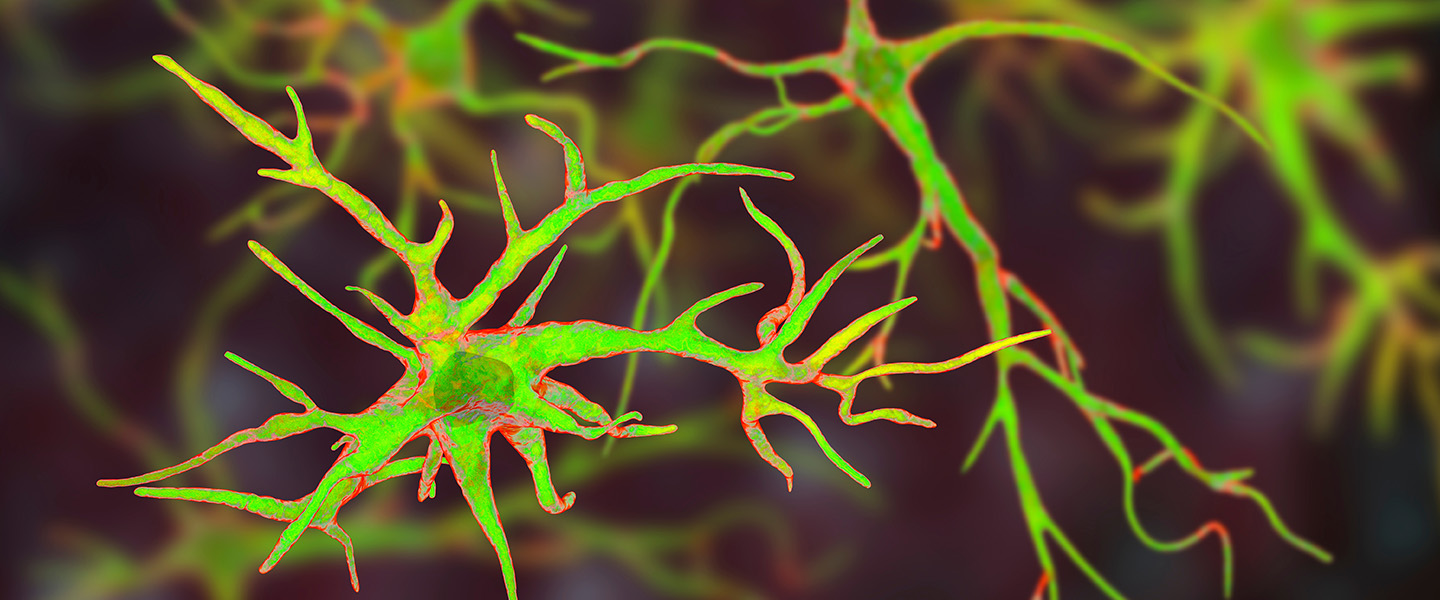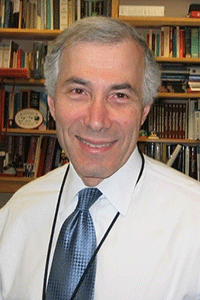New Insights About Epilepsy Mechanism Suggest a Potential Treatment Target
New Insights About Epilepsy Mechanism Suggest a Potential Treatment Target

Researchers studying a common form of epilepsy have made an important discovery about a process within the brain's hippocampus that appears to modulate seizure activity and suggests a possible new target for future therapies.
In epilepsy, according to the NIH's National Institute of Neurological Disorders and Stroke (NINDS), the normal pattern of neuronal activity in the brain becomes disturbed, giving rise to unusual sensations, emotions, and behavior, or sometimes convulsions, muscle spasms, and loss of consciousness. Sixty percent of epileptic seizures are convulsive, and involve involuntary muscle contractions which can be incapacitating.
A team led by Michael A. Bonaguidi, Ph.D., of the University of Southern California, wanted to extend intriguing studies performed in rodent models of epilepsy which suggested that one possible cause of epilepsy might be traced to a process called neurogenesis.
Neurogenesis involves the birth of new nerve cells—in humans, mainly in a portion of the brain's hippocampus called the dentate gyrus. For much of the 20th century, most neuroscientists believed that the mature adult brain was essentially fixed and generated no new neurons or helper cells. More recent research, including studies led by BBRF Scientific Council members including Rene Hen, Ph.D., Fred Gage, Ph.D., and Elizabeth Gould, Ph.D., among others, have provided convincing evidence that new cells are in fact generated in the adult brain.
Recent experiments in rodent models of epilepsy have suggested that alterations to adult neurogenesis in the hippocampus could have negative consequences, including increased cell proliferation and migration, and the formation of aberrant synaptic connections that might be capable of initiating epileptic seizures. When researchers have artificially suppressed neurogenesis in the adult rodent hippocampus, seizure activity has been observed to decline, but only temporarily. This implies that seizures have other sources, Dr. Bonaguidi and colleagues have reasoned.
As they explain in a paper appearing in Nature Neuroscience, he and his team explored another potential source of neuronal hyperactivity in epilepsy, a class of brain cells called astroglia: ubiquitous, star-shaped members of a class of brain cells called glia which perform a wide variety of activities supporting the function of neurons. Like neurons, new astroglia are also born in the dentate gyrus of the mature hippocampus. They can have their origin in neural stem cells and neural progenitor cells, which have the remarkable capacity to "differentiate" into a variety of different brain-cell types.
Joining Dr. Bonaguidi and USC colleagues in the epilepsy study were team members affiliated with Columbia University and the NY State Psychiatric Institute: BBRF Scientific Council members Victoria Arango, Ph.D. and J. John Mann, M.D. (who is also a 2008 BBRF Distinguished Investigator); as well as Maura Boldrini, M.D., a 2014 BBRF Independent Investigator and 2006 and 2003 Young Investigator; Andrew Dwork, M.D., 2008 BBRF Independent Investigator and 1998 Young Investigator; and Gorazd Rosoklija, M.D., Ph.D., a 2000 and 1996 BBRF Young Investigator.
The team studied recently harvested postmortem hippocampal tissue from 26 people, aged 21-56: 17 who had been diagnosed with a form of epilepsy called MTLE (epilepsy focused in the brain's mesial temporal lobe), the most common drug-resistant form of adult epilepsy. (The illness can be controlled, at least to some degree, by drug therapy in about half of all cases.) The sample also included 9 age- and sex-matched controls who had no brain disorder.
Using a variety of techniques, the researchers were able to reach a number of significant conclusions based on this sample. One was that adult neurogenesis was occurring in the hippocampus in both controls and individuals with MTLE. While present in MTLE patients, however, neurogenesis declined in intensity the longer an individual had the illness (and not necessarily according to the patient's chronological age).
The decline in new nerve-cell generation in MTLE was described by the team as "exponential," greater than that seen in Alzheimer's disease. They speculated that this decline might be a consequence of seizures that MTLE patients experienced. The decline may also be associated with observations that MTLE patients display progressive cognitive impairment over the course of their illness.
The researchers noted comparatively small numbers of immature, i.e., recently born neurons, in the hippocampal samples from MTLE patients, but found they were functionally inactive and therefore unlikely to be involved in processes giving rise to epileptic activity.
But the researchers could not say the same for astroglia. In their human sample, the team saw "persistent levels of immature [i.e., recently born] glia" throughout the duration of MTLE. Yet immature astroglia were not seen in the hippocampus of control individuals. This led the team to conclude that "immature astroglia observed in [MTLE patients] in this study likely represent a pathological manifestation of epilepsy."
Cell-culture experiments using tissue from MTLE patients provided additional evidence that neural precursor cells in the adult hippocampus tend to give rise to astroglia rather than neurons, and increasingly so as the illness progresses. Through a complex process still not well understood, immature astroglia (rather than immature neurons) may have a role in the initiation of brain activity leading to epileptic seizures, the team suggested.
If future research confirms the team's hypothesis that newborn immature glial cells "have a role in both initiating and modulating seizure activity," then they become a potential target of interest in the development of new therapeutic approaches for epilepsy.





